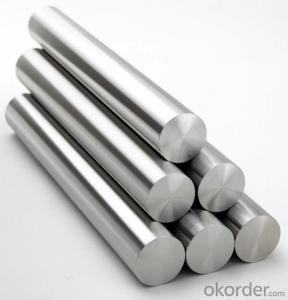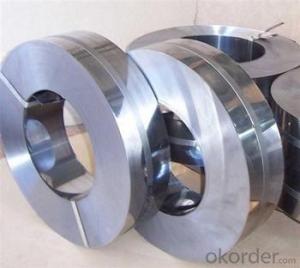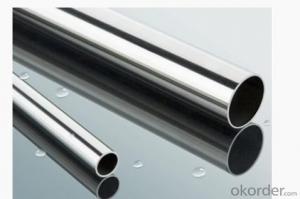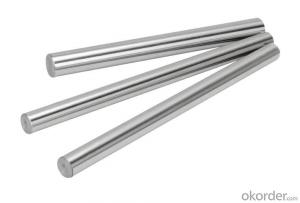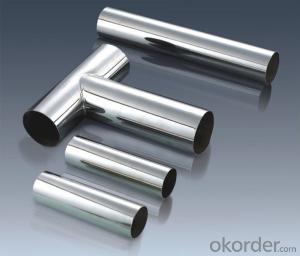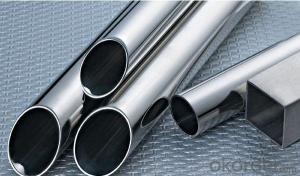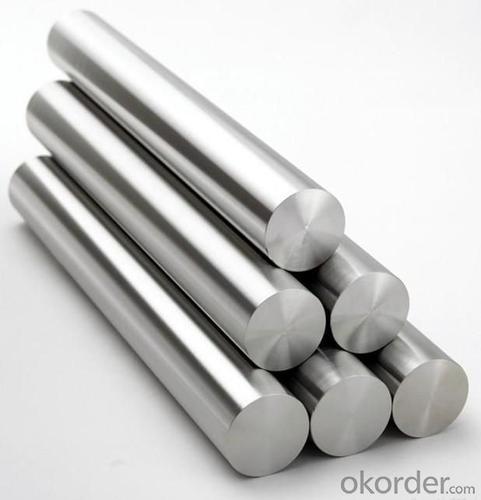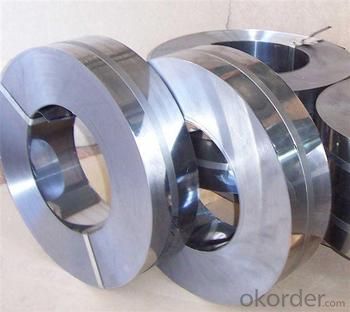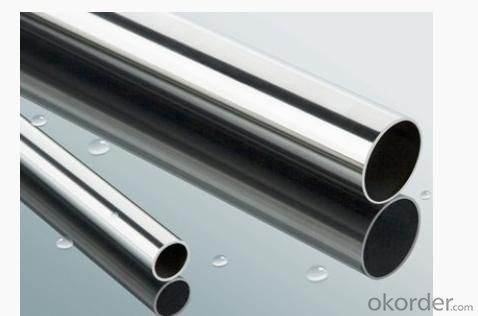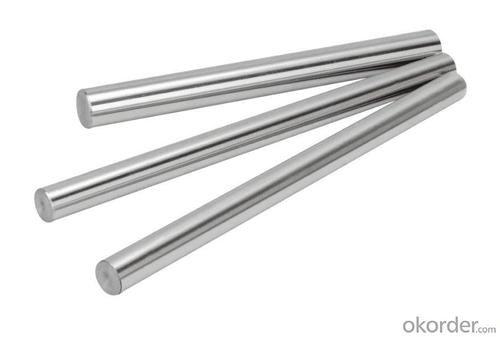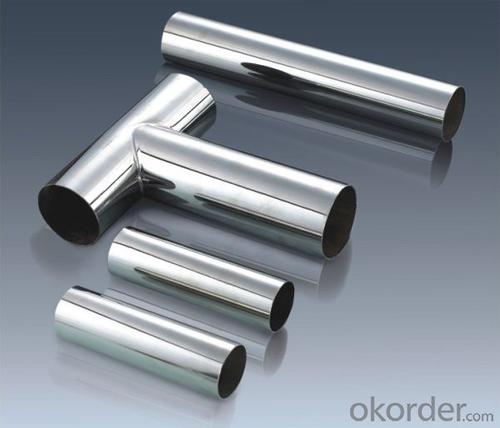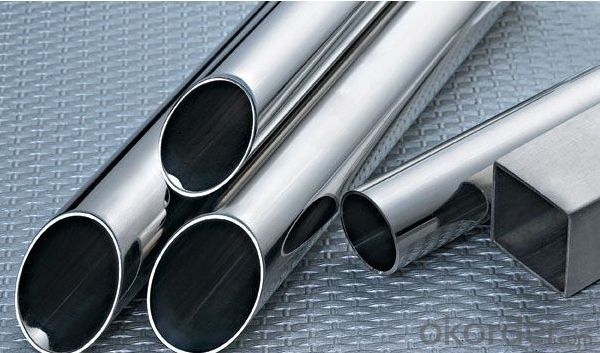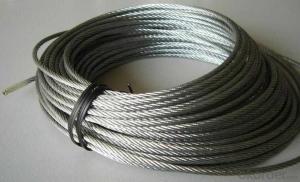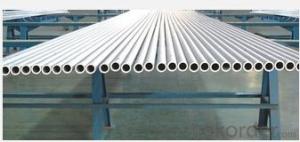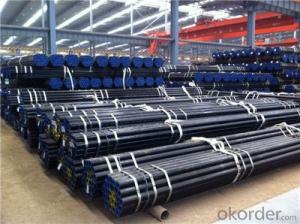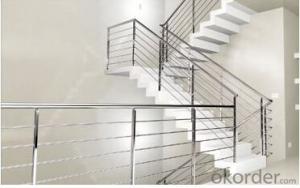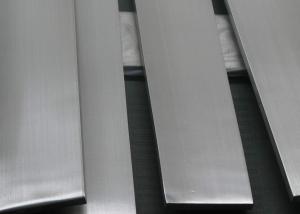Stainless Steel tube 304 raw material with best sales
- Loading Port:
- Shanghai
- Payment Terms:
- TT OR LC
- Min Order Qty:
- 1000 m.t
- Supply Capability:
- 1000000 m.t/month
OKorder Service Pledge
OKorder Financial Service
You Might Also Like
Stainless steel 304
Product Information of stainless steel:
- Width: customized
- Surface: 2B/BA/6K/8K/NO.4/HL.
- Thickness: 0.3mm - 3.0mm.
- Delivery time: 15-25 days.
- Length : As customer's requirement.
- Package: With export standard packing or customize packing.
- Payment Terms: T/T (30% deposit pay in advance and the balance before shipment) , irrevocable L/C.
Company advantage:
-Top Equipments, Leading In The Industry.
- Professional Team, Leading Innovation.
- Huge Supply Capacity Advantage, Timely and Effective Delivery.
- Modern Logistic, Fact and Convenient.
- Precise Manufacturing, Exquisite Products.
- Serve People, Create Value.
- Dimensional Network, Powerful Expansion.

- Q: Can stainless steel pipes be used for steam piping?
- Yes, stainless steel pipes can be used for steam piping. Stainless steel is highly resistant to corrosion and can withstand high temperatures, making it an excellent choice for steam applications where durability and longevity are important.
- Q: Can stainless steel pipes be insulated with polylactide-co-glycolide?
- No, stainless steel pipes cannot be insulated with polylactide-co-glycolide as it is a biodegradable polymer commonly used in medical applications, and it may not provide sufficient insulation for pipes.
- Q: Can stainless steel pipes be insulated with polyacrylonitrile?
- Yes, stainless steel pipes can be insulated with polyacrylonitrile (PAN). Polyacrylonitrile is a versatile and commonly used polymer that possesses excellent thermal insulation properties. It is often used as a foam or fiber insulation material due to its low thermal conductivity and high resistance to heat transfer. Polyacrylonitrile insulation can be easily applied to the surface of stainless steel pipes to reduce heat loss or gain, improve energy efficiency, and prevent condensation. It also provides protection against corrosion and mechanical damage.
- Q: What is the difference between 304F and 316F stainless steel pipes?
- The main difference between 304F and 316F stainless steel pipes lies in their chemical composition and corrosion resistance properties. 304F stainless steel contains a higher percentage of chromium (18-20%) and nickel (8-10.5%), which provides good corrosion resistance in mildly corrosive environments. On the other hand, 316F stainless steel has a higher percentage of chromium (16-18%), nickel (10-14%), and molybdenum (2-3%), making it more resistant to corrosion, particularly in chloride-rich environments. Therefore, 316F stainless steel pipes are generally preferred in more corrosive and marine applications.
- Q: Are stainless steel pipes suitable for offshore platforms?
- Offshore platforms can indeed utilize stainless steel pipes effectively. Stainless steel is a material that resists corrosion and can endure the harsh marine environment, including exposure to seawater, salt, and other corrosive substances. It is capable of withstanding oxidation and pitting, which are common problems in offshore settings. The use of stainless steel pipes in offshore platforms is widespread, serving various purposes such as fluid and gas transportation, structural support, and protection. These pipes are renowned for their exceptional strength, durability, and reliability, which are pivotal in offshore operations that prioritize safety. Moreover, stainless steel pipes necessitate minimal maintenance, reducing the need for frequent inspections and repairs. This advantage is particularly beneficial in offshore environments where accessibility and upkeep can be challenging due to remote locations and severe weather conditions. Aside from its corrosion resistance, stainless steel also possesses desirable traits such as heat resistance, fire resistance, and excellent mechanical properties. These characteristics make stainless steel pipes an optimal choice for offshore platforms, as they can withstand high temperatures, fire hazards, and mechanical stress. Overall, stainless steel pipes offer a cost-effective and long-lasting solution for offshore platforms, ensuring the safety, reliability, and efficiency of operations in these demanding environments.
- Q: Can stainless steel water pipes be cooled and bent?
- They are lighter in bending and torsional strength, and therefore are widely used in the manufacture of mechanical parts and engineering structures. It is also used to produce all kinds of conventional weapons, guns, shells and so on.
- Q: Is stainless steel flexible enough for plumbing applications?
- Yes, stainless steel is flexible enough for plumbing applications. Stainless steel pipes and fittings are known for their durability and strength, but they also offer a certain degree of flexibility. This flexibility allows for easier installation in various plumbing systems, including those with complex layouts or tight spaces. Stainless steel pipes can be bent and shaped without compromising their structural integrity, making them suitable for both residential and commercial plumbing projects. Additionally, stainless steel is highly resistant to corrosion, which is crucial for plumbing applications where exposure to water and other corrosive substances is common. Overall, stainless steel's combination of strength, durability, and flexibility makes it an excellent choice for plumbing applications.
- Q: Why pickling before cleaning stainless steel pipe oil?
- Remove the welding slag, dust particles, impurities, oil and other pollutants produced in the installation, so as to avoid polluting the oil products.Avoid polluting oil products.
- Q: Are stainless steel pipes suitable for wastewater treatment ponds?
- Yes, stainless steel pipes are suitable for wastewater treatment ponds. Stainless steel is highly resistant to corrosion, which is essential for withstanding the harsh and corrosive environment of wastewater treatment ponds. Additionally, stainless steel pipes are durable, have a long lifespan, and can handle high-pressure systems, making them a reliable choice for wastewater treatment applications.
- Q: What is the difference between satin and brushed finishes in stainless steel pipes?
- Satin and brushed finishes are two common types of surface treatments used in stainless steel pipes. While both finishes enhance the appearance of the pipes and provide some level of corrosion resistance, there are distinct differences between them. A satin finish is achieved by using a fine abrasive material to create a smooth, even, and glossy surface. This finish is characterized by its reflective and shiny appearance, similar to that of satin fabric. It gives the stainless steel pipe a sleek and polished look, making it suitable for applications where aesthetics are important. Satin finishes are often used in architectural and decorative applications such as handrails, furniture, and kitchen appliances. On the other hand, a brushed finish is achieved by using a wire brush or abrasive pad to create a pattern of fine lines on the surface of the stainless steel pipe. This finish is characterized by its matte appearance with visible parallel lines running across the surface. Brushed finishes are less reflective than satin finishes and offer a more subdued, industrial look. They are commonly used in applications where durability and resistance to visible wear and tear are important, such as in machinery, automotive components, and commercial kitchen equipment. While both satin and brushed finishes provide some level of corrosion resistance, it is important to note that the surface texture of brushed finishes can make them slightly more resistant to visible scratches and scuffs compared to satin finishes. However, it is important to remember that the overall corrosion resistance of stainless steel is primarily determined by its alloy composition, not the surface finish. In summary, the main difference between satin and brushed finishes in stainless steel pipes lies in their appearance and intended use. Satin finishes offer a reflective and polished look suitable for decorative applications, while brushed finishes provide a more matte and industrial appearance for applications that require durability and resistance to visible wear and tear.
Send your message to us
Stainless Steel tube 304 raw material with best sales
- Loading Port:
- Shanghai
- Payment Terms:
- TT OR LC
- Min Order Qty:
- 1000 m.t
- Supply Capability:
- 1000000 m.t/month
OKorder Service Pledge
OKorder Financial Service
Similar products
Hot products
Hot Searches
Related keywords
